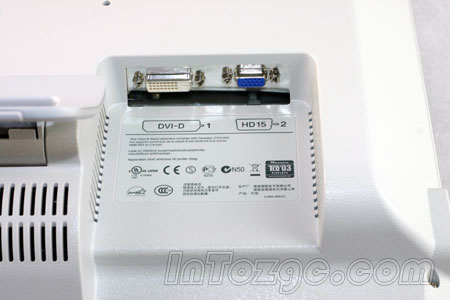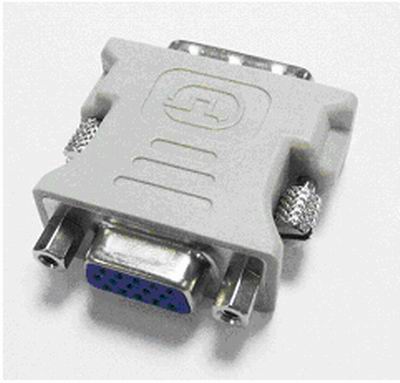Introduction and application of DVI signal line
What is DVI?
Nowadays, LCD monitors with DVI interface are very popular. It is also very common to have a display card with the same interface. This combination has led to the popularity of DVI, and the traditional VGA interface has gradually disappeared because it cannot match the digital signal.
Speaking of the DVI interface, many friends will think of a white D-type socket. That's right, this is the DVI interface, but it is different from the VGA interface. The DVI interface is divided into three categories and five standards. Each standard has its own application range. If it is not distinguished, it will affect the performance of the display device.

DVI is called Digital Visual Interface. It was formed by LDWG (Digital Display Working Group) in 1999 by Silicon Image, Intel (Intel), Compaq (Compaq), IBM, HP (HP), NEC, Fujitsu (Fujitsu) and other companies. The digital display working group) introduced the interface standard.
It is based on Silicon Image's PanalLink interface technology and is based on the TMDS (TransiTIon Minimized Differen TIal Signaling) electronic protocol as the basic electrical connection. TMDS is a differential signaling mechanism that encodes pixel data and passes it over a serial connection. The digital signal generated by the graphics card is encoded by the transmitter according to the TMDS protocol and sent to the receiver through the TMDS channel, and is decoded and sent to the digital display device.

DVI interface pin definition
A DVI display system includes a transmitter and a receiver. The transmitter is the source of the signal and can be built into the graphics chip or on the graphics card in the form of an add-on chip. The receiver is a circuit on the display that accepts digital signals and decodes them. In the digital display circuit, by both of them, the signal from the graphics card becomes an image on the display.
Compared with the conventional VGA signal, the liquid crystal display using the DVI signal has no phase problem and does not cause pixel jitter. In addition, after using the DVI signal, the display will not cause geometric distortion, which greatly improves the quality of the picture.
Different standards for DVI
Unlike the VGA interface, there are many standards for the DVI interface. Be sure to understand when using the monitor.
As you can see from the chart below, DVI is divided into five categories. Among them, DVI-D and DVI-I are divided into two types: “dual channel†and “single channelâ€. We usually see single channel version. The cost of dual channel version is very high, so only some professional equipments have It is difficult for ordinary consumers to see.

DVI-A is an analog transmission standard that can be seen in late-stage large-screen professional CRTs. However, because there is no essential difference between VGA and VGA, the performance is not high, so DVI-A has actually been abandoned. As for the DFP interface, this is an early digital specification that has been deprecated.
About the various features of the DVI signal:
Specification signal note
DVI-I dual channel digital / analog convertible VGA
DVI-I single channel digital / analog convertible VGA
DVI-D dual channel digital non-convertible VGA
DVI-D single channel digital non-convertible VGA
DVI-A simulation has been deprecated
DFP number is deprecated
VGA simulation -
What is the difference between 18-pin and 24-pin?
In the market, we can often hear the dealers describe the DVI line with 18+1 and 24+1 and 18+5 and 24+5 specifications.
Some people say that the 18-pin is a simplified version, and the performance is not as good as the 24-pin. Others say that some of the 24-pin are ground, but the effect is exactly the same as the 18-pin. Are these statements correct?
In fact, the above table has revealed the details. The 18-pin is a single-channel DVI with a transmission rate of only half of a 24-pin, 165MHz. In the screen display, the single-channel DVI supports the same resolution as the dual channel, but the refresh rate is only about half of the dual channel, which will cause the display quality to drop. Generally speaking, the single-channel DVI interface can only support up to 1920*1080*60hz or 1600*1200*60hz, which is the normal display of the existing 23-inch widescreen display and 20-inch normal-scale display. This will cause a drop in display.
At present, the commonly used liquid crystal displays are still maintained at about 19-inch screens and 20-inch wide screens. There are very few people who actually use large-screen displays, so the 18-pin single-channel DVI interface is sufficient. With a large-screen LCD display, 24-pin dual-channel DVI is a must.

DVI-I to VGA connector
As for the 18+5 and 24+5 specifications, they all belong to DVI-I, and the extra 4 lines are used to be compatible with traditional VGA analog signals. This type of interface is used more on the display card, and the display is basically not used, unless a single-interface display such as the 970P is considered.
Suffering from the display card
Do you understand this? If your monitor is lower than the 23-inch widescreen or 20-inch screen, there is no problem with the 18-pin DVI. Of course, you can use the 24-pin, but it is a waste. In addition, if you want to use a large screen display, a graphics card with dual channel output is also very important. Therefore, most DVI interfaces of display cards are single-channel, and the performance is not up to standard.
However, Xiaobian introduces only theoretical figures. In fact, in many cases, DVI cannot achieve the performance indicators that should be achieved.

External TMDS chip, now this chip is mostly integrated in the display core
In the past, DVI-based display cards used an external TMDS solution, although the cost was high, but the effect was good. Nowadays, the display cores are integrated with TMDS. Although the cost is reduced on the surface and the performance is improved, in fact, the problem of cutting corners of the graphics card is very serious, and the peripheral circuit saves a mess, and the output performance simply fails to meet the requirements.
Xiaobian in the evaluation of the display, often found that some display card output 1600 * 1200 or 1920 * 1080 resolution when the refresh rate can not go up, replace the display card to solve the problem. After the analysis, the display card is too poor to work, the signal is faulty, and the display cannot be displayed normally.

This display card can not meet the requirement of 60HZ at 1920*1200
Therefore, we have reason to suspect that some of the low-end cards will have problems in outputting the final resolution. Therefore, it is recommended that those who have a good display buy regular brand-name products, and don't want to buy cheap goods.
As for the cable used, we think that the one attached to the display can fully meet the requirements without additional purchase. Especially those who use small screen displays, there is no need to replace them. Professional monitors usually come with good performance cables and do not need to be replaced.
Plate non-damaged desulfator with Smart pulse, Simple and Safe, Restore your battery when charging.
Most of Electric vehicle use lead-acid battery bank(12V /6V /8V cells packed in Series)as the power source, The design lifespan of battery is 2~3 years, but actually the battery is usually failure after 6~12 months used which State-of-capacity gradually decline and even some scraped. Through analysis by cutting a large number of failure batteries, the battery water loss and sulfation is quite prominent. Such as the phenomenon of battery sulfation and water dehydration can be effectively inhibited to prolong the service life greatly up to 2 times.
EV Battery Charging Restorer is a new generation of high-tech products developed specifically for restoring Electric vehicle battery when it is charging every time, it utilizes the energy from the charger when charging, generating electronic smart pulse with special frequency to be resonance with the thick lead sulfate crystals in battery charging process. Under the disturbance by the specific frequency pulse, the recrystallization of lead sulfate can be prevented effectively
Product features:
1. The use of advanced electronic pulse repair technology, no-damaged eliminate battery plate sulfation crystal. Recovery of battery capacity, ensure the EV driving mileage is longer.2. The connection with charger is simple, safe and convenient, and Smart Pulse Charging Restorer can be used in conjunction with the charger for each charging process. The problem of sulfation of the plate can be eliminated during every charging process.
3.It smartly identify 72V/60V/48V/36V battery bank Spec, automatically adapt to precise voltage, automatically adjust the restore electric pulse.This Battery pulse maintainer is suitable for the popular 72V~36V batteries of electric vehicles, buy a set, multi vehicles benefit in family.
4. A strict circuit filtering technique, does not repair your charger as a pulse, without changing the structure of the charger, does not affect the charging parameters of the charger, safe and carefree.
EV Battery Charging Restorer
EV Battery Charging Restorer,Electric Motorcycle Battery Restorer,EBike Power Battery Repair,Electric Cycle Battery Repair
Shenzhen Daceen Technology Co., Ltd. , http://www.daceen-sz.com